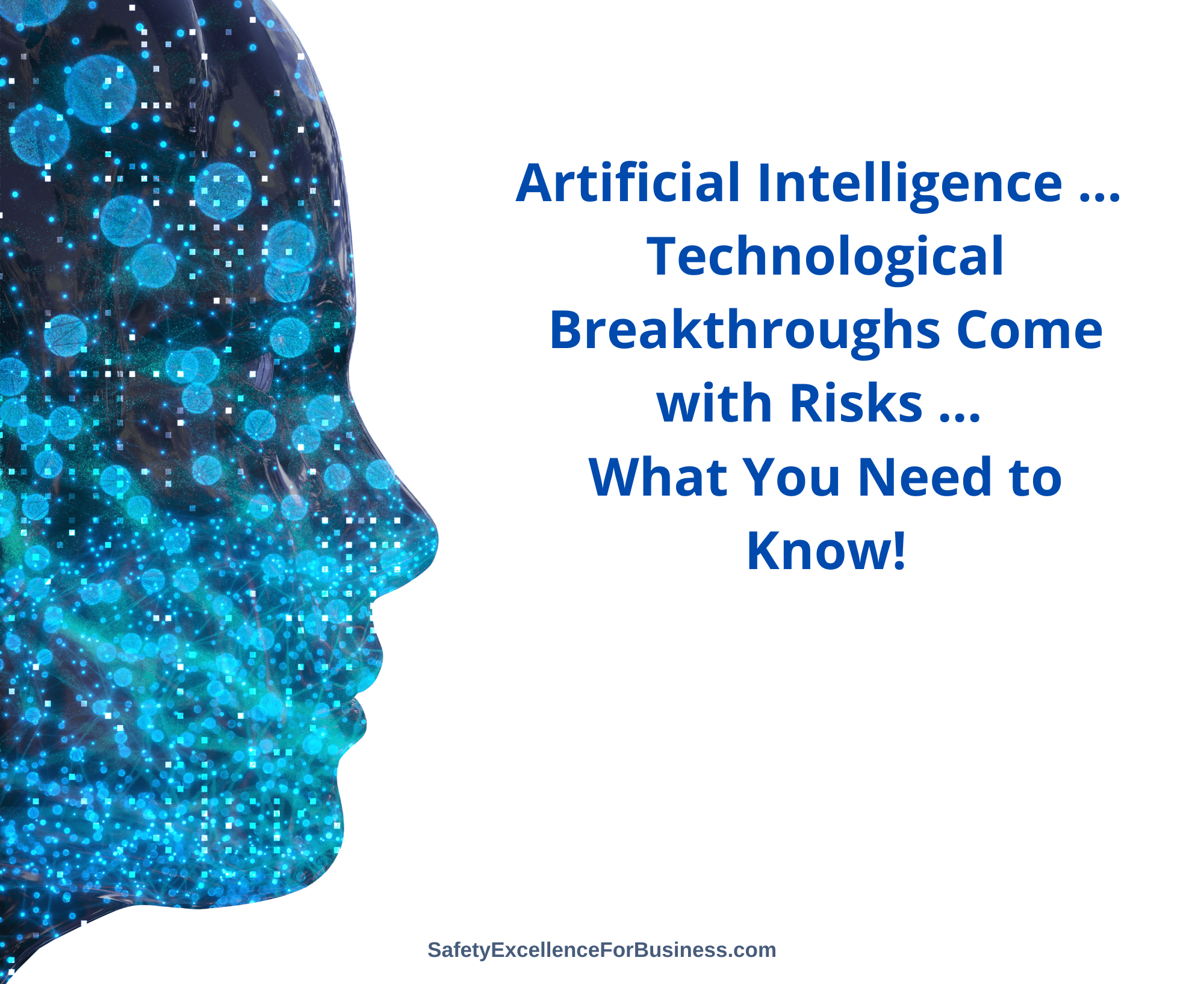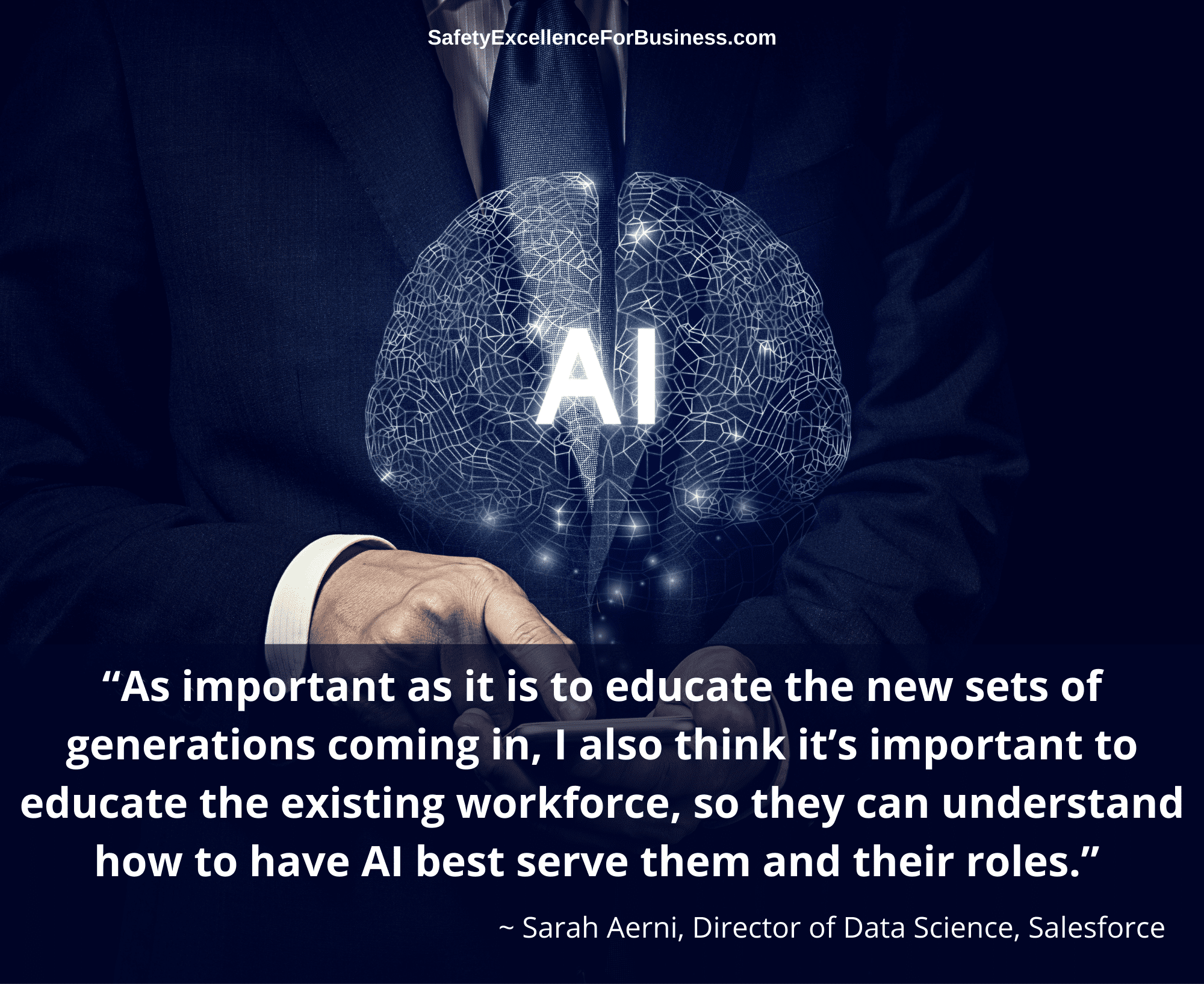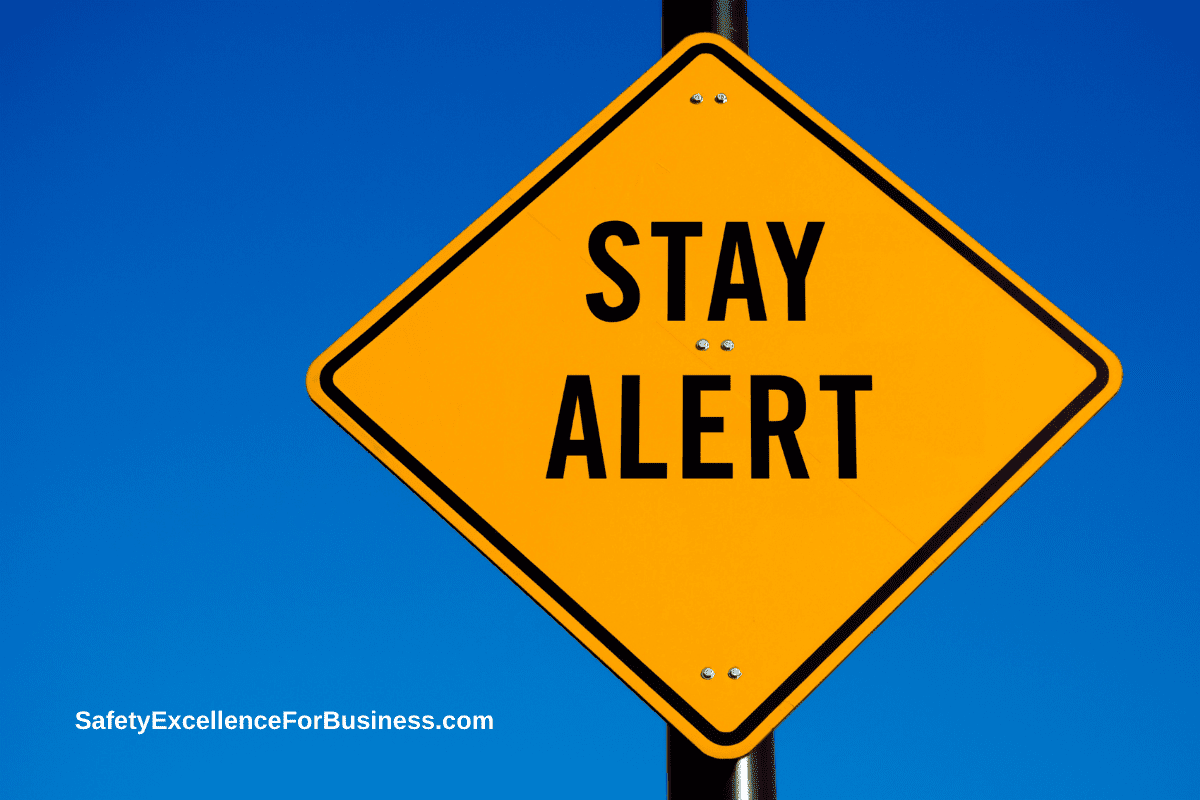Artificial Intelligence … Technological Breakthroughs Come with Risks … What You Need to Know!
Artificial intelligence (AI) is intelligence demonstrated by machines, as opposed to the natural intelligence displayed by animals including humans. Leading AI textbooks define the field as the study of intelligent agents: any system that perceives its environment and takes actions that maximize its chance of achieving its goals. In this technologically advanced era, we experience AI all around us – from using ATMs, using a kiosk, using a self-check-out counter, even ordering from Amazon.
In the workplace, the impact of artificial intelligence on workers includes both applications to improve worker safety and health, and potential hazards that must be controlled.
One potential application is using AI to eliminate hazards by removing humans from hazardous situations that involve risk of stress, overwork, or musculoskeletal injuries. Predictive analytics may also be used to identify conditions that may lead to hazards such as fatigue, repetitive strain injuries, or toxic substance exposure, leading to earlier interventions. Another is to streamline workplace safety and health workflows through automating repetitive tasks, enhancing safety training programs through virtual reality, or detecting and reporting near misses.

Robotics is one very useful place where machines and activities can be automated using AI. Precision can be gained, and human error eliminated. We see robots used extensively in production lines like automobile assembly plants, and bottling operations, in the medical and beverage industries. There is a lot of talk about eliminating jobs like cooking french fries in McDonalds Restaurants, for example. In all these activities there is a lot of feedback enabling the systems to be optimized and eliminate any unintended consequences. Lots of hazardous activities can be eliminated through the use of robots. Robots themselves have safety hazards so there is a need to keep people from getting tangled up in the machines.
There is also good use of AI in searching for best practices and searching the literature for possible solutions to our problems. However, it is important to personally evaluate the output of AI systems to be sure the suggested answers make sense, and unintended consequences are avoided. People need to get involved and evaluate the AI solutions to be sure that they really make sense and are workable. Algorithm bias is real. The algorithms are made by unknown people, some place. Hopefully they are competent and careful, but the algorithms are hidden to most users, and the thoroughness in developing them is unknown to most users. Blindly using the AI output can get people into a lot of trouble. AI does not replace good thinking and judgement by knowledgeable people who know the work that needs to be done. Never underestimate the valued knowledge of those closest to the work – their input is critical.
AI is also being used to develop safety training programs and messages. These efforts to control the people in automated training can get way off the tracks. Again, the algorithms are opaque. The companies producing them can be ethical or they can cut corners and mislead the people being trained. Are the algorithms being designed to sell a particular piece of equipment which may or may not be the best solution to the safety problem. Who is paying the algorithm developer? Are their goals really aligned with your needs?
Blindly accepting the output of an AI program will get a lot of people into trouble and hurt. There is no replacement for skilled, knowledgeable people evaluating the AI output. This takes time and effort, and many organizations are understaffed so the temptation to just take the unquestioned, AI output is high.
Please use AI with a high level of maturity, look carefully at the output and make the best decisions you can. If things don’t add up or look strange, challenge the output, and do what makes the best sense. Call me at 716-622-6467 if you’d like to explore this further.









